Abstract
1. The pattern and control of sweating in one breed of goat and six breeds of sheep have been studied.
2. Heat exposure of both sheep and goats resulted in periodic discharges of moisture on to the surface of the skin of the shorn mid-side. The frequency of discharge showed considerable variation between individual animals, varying from less than 1/hr to 14/hr. Approximate counts of the number of active sweat glands suggested that the same glands were involved at each discharge.
3. The amount of moisture produced at each discharge declined upon continued heat exposure. The rate of decline was independent of the frequency of discharge.
4. Adreno-medullary denervation had no effect on the pattern of sweating in either the sheep or the goat.
5. Intravenous adrenaline administration (5 μg/kg body wt.) caused the sweat glands to discharge, but noradrenaline had no effect at the same dose.
6. Thermal sweating was inhibited by bethanidine and phenoxybenzamine but not by propranolol. Sweating induced by intravenous adrenaline administration was blocked by phenoxybenzamine but not by bethanidine or propranolol.
7. It is concluded that sweating on the mid-side of the sheep and goat is controlled by an adrenergic mechanism, that secretion from the adrenal medulla under conditions of mild heat stress does not stimulate the glands and that sweating is mediated by adrenergic α-receptors.
Full text
PDF
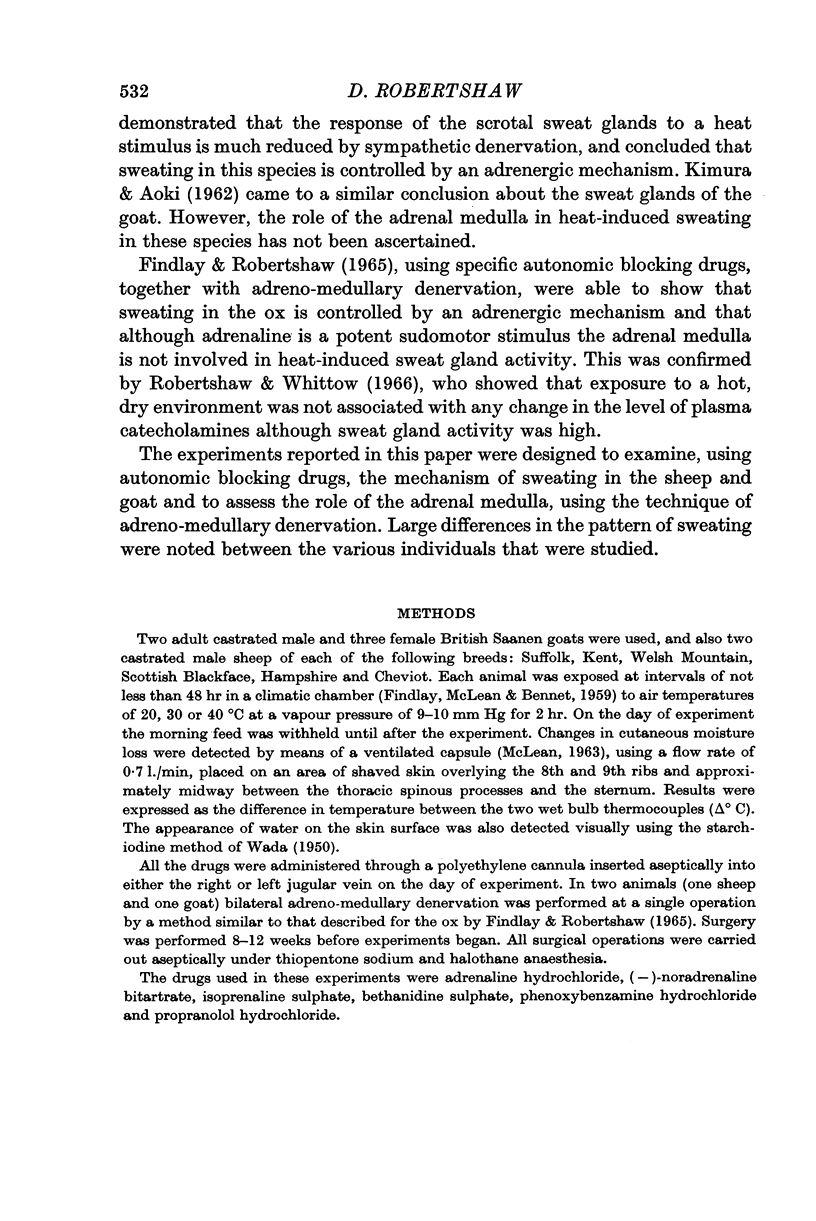
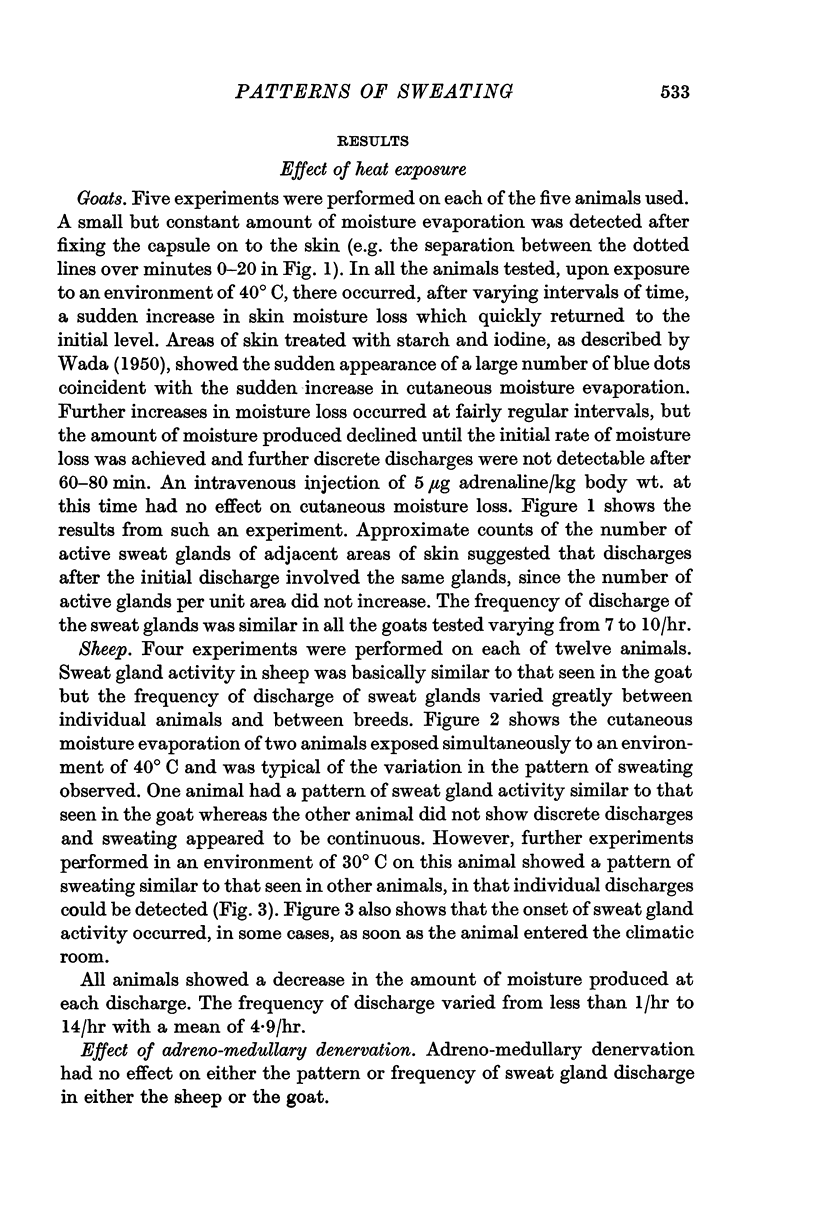
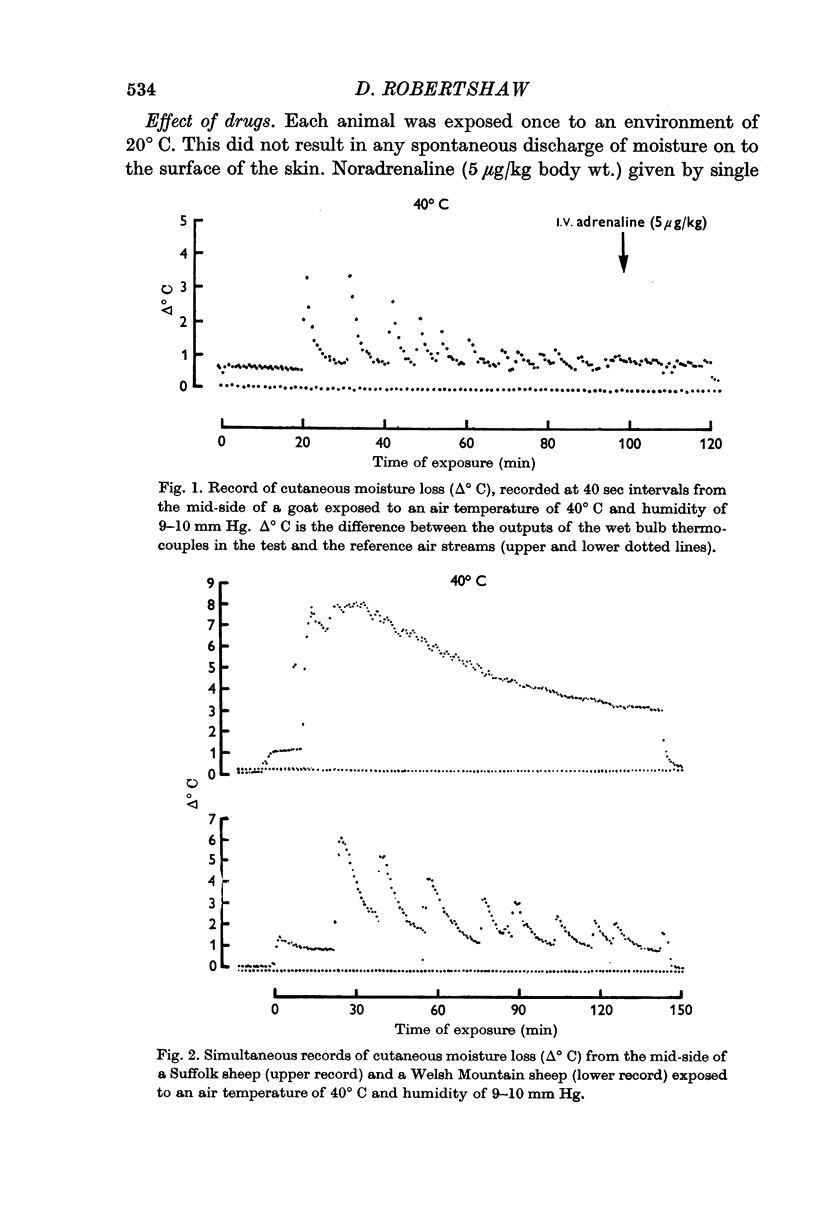
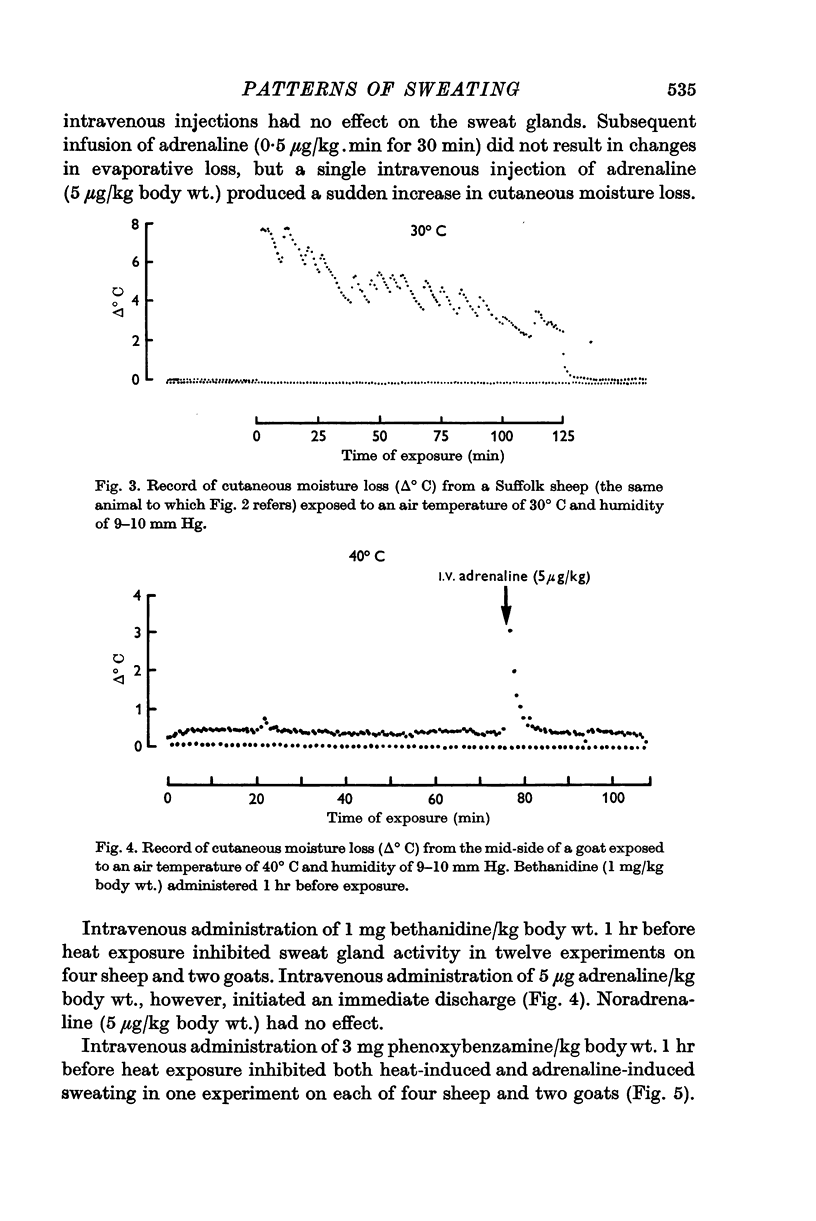
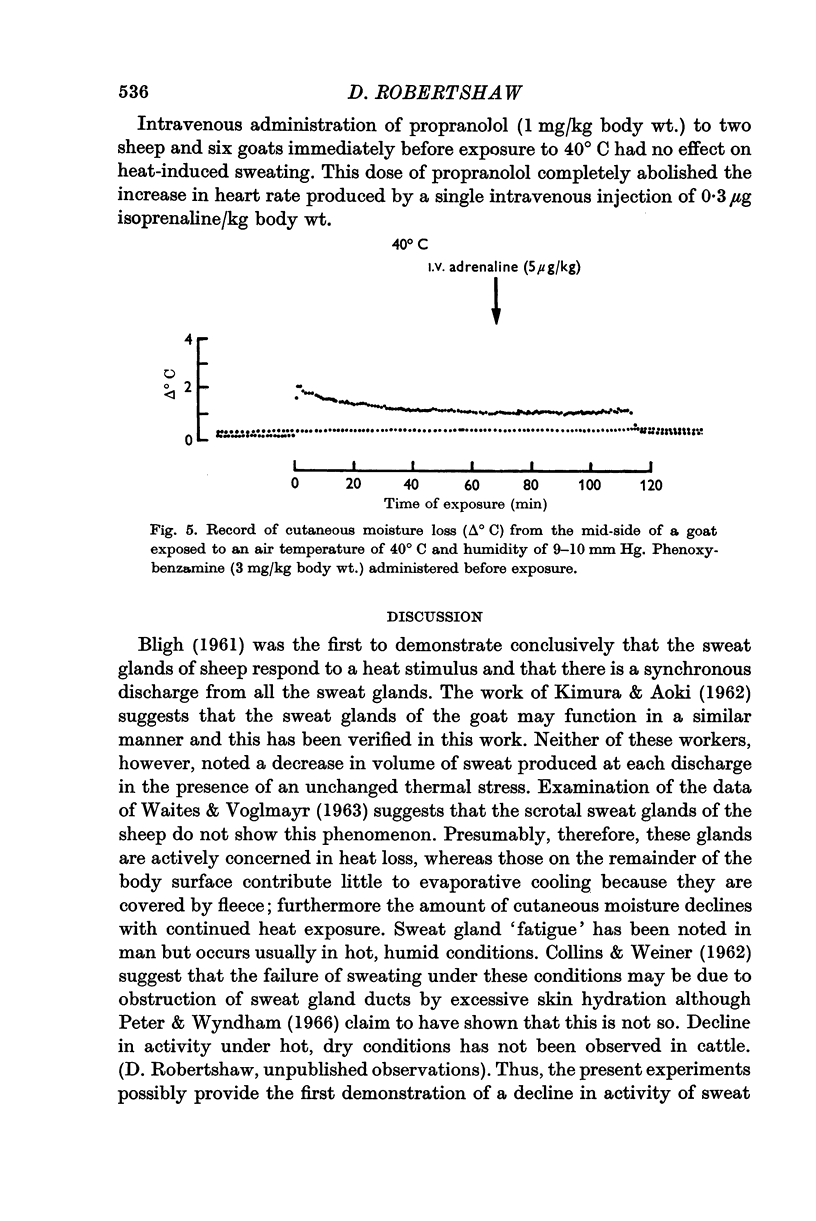
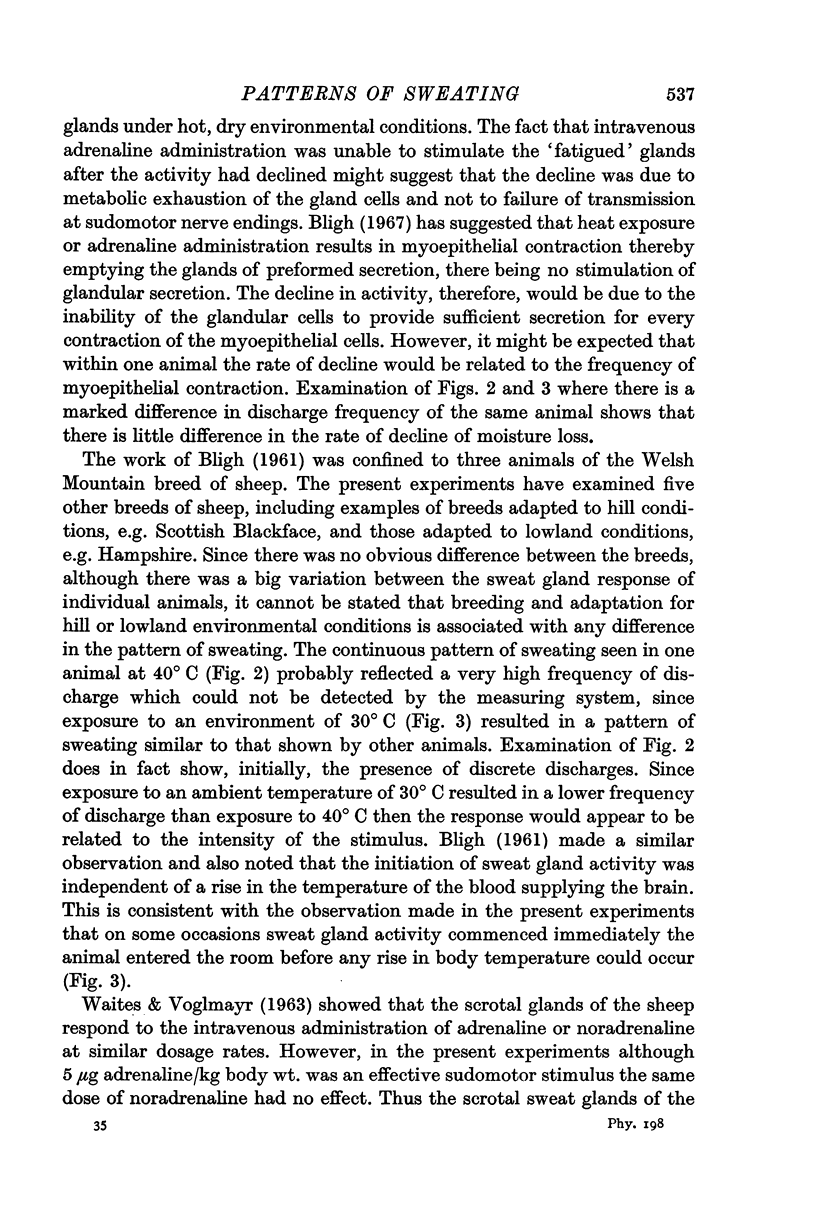

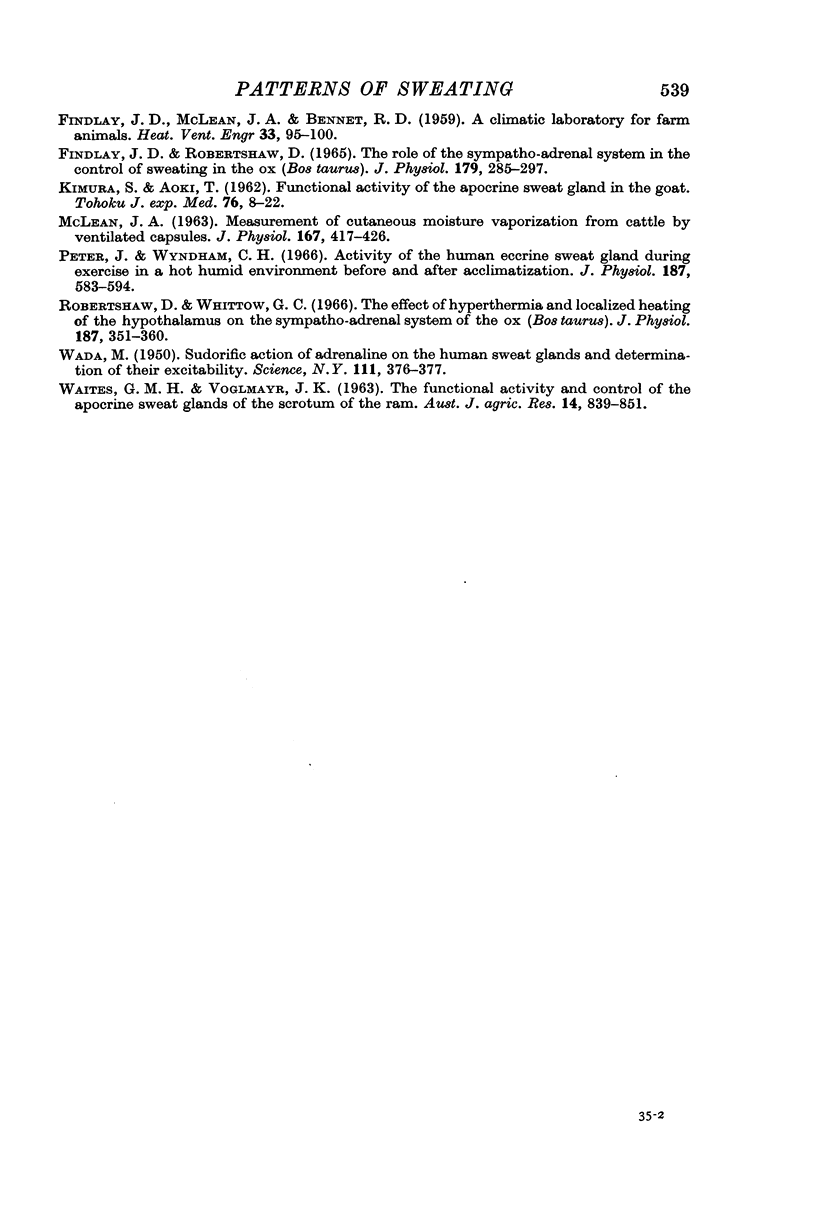
Selected References
These references are in PubMed. This may not be the complete list of references from this article.
- BOURA A. L., GREEN A. F. Adrenergic neurone blockade and other acute effects caused by N-benzyl-N'N"-dimethylguanidine and its ortho-chloro derivative. Br J Pharmacol Chemother. 1963 Feb;20:36–55. doi: 10.1111/j.1476-5381.1963.tb01295.x. [DOI] [PMC free article] [PubMed] [Google Scholar]
- Bligh J. A thesis concerning the processes of secretion and discharge of sweat. Environ Res. 1967 Jun;1(1):28–45. doi: 10.1016/0013-9351(67)90004-7. [DOI] [PubMed] [Google Scholar]
- COLLINS K. J., WEINER J. S. Observations on arm-bag suppression of sweating and its relationship to thermal sweat-gland 'fatigue'. J Physiol. 1962 May;161:538–556. doi: 10.1113/jphysiol.1962.sp006902. [DOI] [PMC free article] [PubMed] [Google Scholar]
- Findlay J. D., Robertshaw D. The role of the sympatho-adrenal system in the control of sweating in the ox (Bos taurus). J Physiol. 1965 Jul;179(2):285–297. doi: 10.1113/jphysiol.1965.sp007663. [DOI] [PMC free article] [PubMed] [Google Scholar]
- KIMURA S., AOKI T. Functional activity of the apocrine sweat gland in the goat. Tohoku J Exp Med. 1962 Feb 25;76:8–22. doi: 10.1620/tjem.76.8. [DOI] [PubMed] [Google Scholar]
- MCLEAN J. A. Measurement of cutaneous moisture vaporization from cattle by ventilated capsules. J Physiol. 1963 Jul;167:417–426. doi: 10.1113/jphysiol.1963.sp007159. [DOI] [PMC free article] [PubMed] [Google Scholar]
- Peter J., Wyndham C. H. Activity of the human eccrine sweat gland during exercise in a hot humid environment before and after acclimatization. J Physiol. 1966 Dec;187(3):583–594. doi: 10.1113/jphysiol.1966.sp008110. [DOI] [PMC free article] [PubMed] [Google Scholar]
- Robertshaw D., Whittow G. C. The effect of hyperthermia and localized heating of the anterior hypothalamus on the sympatho-adrenal system of the ox (Bos taurus). J Physiol. 1966 Nov;187(2):351–360. doi: 10.1113/jphysiol.1966.sp008094. [DOI] [PMC free article] [PubMed] [Google Scholar]
- Wada M. Sudorific Action of Adrenalin on the Human Sweat Glands and Determination of Their Excitability. Science. 1950 Apr 14;111(2885):376–377. doi: 10.1126/science.111.2885.376. [DOI] [PubMed] [Google Scholar]


